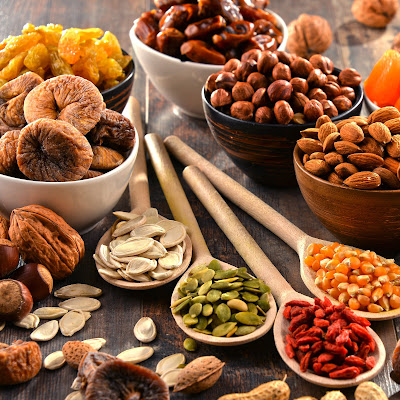In recent years, the importance of protein in a balanced diet has gained significant attention. Proteins are essential macronutrients that play crucial roles in the body, including muscle building, repair, and overall health maintenance. Incorporating high-protein foods into your diet can have numerous benefits, ranging from aiding in weight management to supporting muscle recovery after exercise. This blog post will explore various high-protein foods, their nutritional benefits, and how to integrate them into your meals for optimal health.
1. Lean Meats and Poultry
 |
Lean meats and poultry are excellent sources of high-quality protein. They provide essential amino acids necessary for muscle growth and repair. Examples of lean meats include chicken breast, turkey breast, lean cuts of beef such as sirloin or tenderloin, and pork loin. These meats are low in fat and calories, making them ideal choices for individuals looking to increase their protein intake without excess saturated fat.
2. Fish and Seafood
Fish and seafood are not only rich in protein but also contain valuable omega-3 fatty acids, which are beneficial for heart health and inflammation reduction. Some of the best high-protein fish options include salmon, tuna, trout, and cod. Shellfish like shrimp, crab, and lobster are also excellent sources of protein.
3. Eggs
Eggs are a versatile and affordable protein source, with each egg containing around 6 grams of protein. They are also rich in essential vitamins and minerals, including vitamin D, vitamin B12, and choline. Whether boiled, scrambled, poached, or used in baking, eggs can be easily incorporated into various dishes for a protein boost.
4. Dairy Products
Dairy products such as milk, yogurt, and cheese are not only rich in protein but also provide calcium and other essential nutrients. Greek yogurt, in particular, is known for its high protein content and creamy texture. Cottage cheese is another excellent option, offering a substantial amount of protein per serving while being low in fat and carbohydrates.
5. Legumes and Beans
Legumes and beans are plant-based sources of protein that are also high in fiber, vitamins, and minerals. Examples include lentils, chickpeas, black beans, and kidney beans. These versatile ingredients can be added to soups, salads, stews, and stir-fries to increase their protein content and create satisfying, nutrient-rich meals.
6. Nuts and Seeds
Nuts and seeds are nutrient-dense foods that provide protein, healthy fats, and various vitamins and minerals. Almonds, peanuts, walnuts, and cashews are all excellent sources of protein, while seeds like chia seeds, flaxseeds, and pumpkin seeds are also high in protein and beneficial nutrients. Adding nuts and seeds to salads, yogurt, or oatmeal can enhance their protein content and provide a satisfying crunch.
7. Tofu and Tempeh
Tofu and tempeh are plant-based protein sources made from soybeans. Tofu is a versatile ingredient with a mild taste, making it suitable for various dishes such as stir-fries, soups, and salads. Tempeh is fermented soybean cake with a nutty flavor and firm texture, making it a popular meat substitute in vegetarian and vegan diets. Both tofu and tempeh are rich in protein and can be used in a wide range of recipes.
8. Quinoa and Other Whole Grains
Quinoa is a pseudocereal that is not only high in protein but also contains all nine essential amino acids, making it a complete protein source. Other whole grains such as brown rice, barley, and farro also provide protein, fiber, and essential nutrients. Incorporating whole grains into meals can increase their protein content and contribute to a balanced diet.
Conclusion
Incorporating high-protein foods into your diet is essential for overall health and well-being. Whether you prefer animal-based or plant-based sources of protein, there are plenty of options to choose from. By including a variety of protein-rich foods in your meals, you can ensure that you're meeting your body's needs for muscle repair, energy production, and overall vitality. Experiment with different recipes and ingredients to discover delicious ways to boost your protein intake and support your health goals.








Comments
Post a Comment